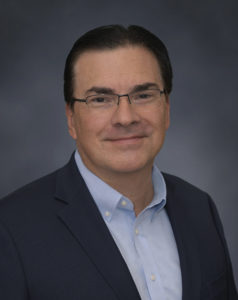
The National Fire Protection Association (NFPA) created Fire Prevention Week to commemorate the Great Chicago Fire of 1871, as well as promote fire safety at home and in the workplace each year during the second week of October. This year marks the 100th anniversary of Fire Prevention Week (FPW) and may be a good time to put some extra emphasis on fire safety in your skilled nursing facility.
It is likely that children at elementary schools around the nation will be visited by their local firefighters during the week of October 9th – 15th to learn about fire prevention and fire safety. Wouldn’t it be a great time for your healthcare facility to focus on fire safety, too?
While nursing homes are required to conduct fire drills and fire response training on a regular basis in accordance with CMS and NFPA requirements, it is not uncommon for a concept known as “drill fatigue” to set in due to the redundancy that comes with the frequency of these requirements. Think about how many times a long-time employee at your facility has participated in training regimens and drills. The curriculum is essentially the same, and the drills follow a typical format but can be perceived as routine and boring. That is until a real emergency occurs and those drills reveal their true value.
Fire Prevention Week represents an excellent opportunity for SNFs and other healthcare facilities to step up their focus on fire safety by coming up with creative ways to promote this essential element of facility operations with staff. The theme that the NFPA developed for this year is “Fire Won’t Wait, Plan Your Escape.”
Conducting a special in-service on each shift focused on fire safety and emergency response procedures during FPW is a good starting point. Reviewing the common protocols associated with fire response, including the R.A.C.E. (Rescue, Alarm, Confine, Extinguish) and P.A.S.S (Pull, Aim, Squeeze and Sweep) procedures, will remind your team of the critical sequence of response to a fire or smoke condition in your building.
In addition to reviewing emergency response protocols, consider doing something a little more creative to promote fire prevention and response with your team. When was the last time your facility provided “hands-on” fire extinguisher training with your fire extinguisher contractor? FPW is a great time to conduct this type of training.
Another thing to consider would be creating an interactive display for staff that showcases the building’s fire protection features along with some fire prevention tips. As an example, you could create a table display that includes a mock-up of a fire alarm pull station that everyone can actually “pull,” as well as other fire protection features that staff can see up close, like fire sprinkler heads and smoke detectors. In the same display, you can also have examples of items that cause fires like candles, extension cords and power blocks that are prohibited in a SNF.
Another popular activity that you may also want to consider is hosting a meal (breakfast, lunch or dinner) for staff at the facility sometime during FPW that aligns with this year’s theme. Serving cupcakes, cookies, a sheet cake or some type of sweet treat decorated to promote fire safety can help enhance levels of safety and preparedness within your facility.
You can also consider specifying a specific day during FPW where everyone wears a “red” shirt or similar clothing article to promote fire safety awareness.
Trying to engage the assistance of your local fire department is always a good idea but will likely be a challenge during Fire Prevention Week this year. Most fire service agencies are booked solid during this week in October with visits to schools and other organizations within their jurisdiction to promote fire safety. Don’t let that stop you from reaching out to the fire department to see if you can get them scheduled to come to your community next year during FPW to enhance your SNF’s focus on fire safety.
You can visit the NFPA’s website for Fire Prevention Week 2022 to get more ideas.
Stan Szpytek is the president of the national consulting firm, Fire and Life Safety, Inc. based in Mesa, Arizona, and is the Life Safety/Disaster Planning Consultant for the Arizona Health Care Association, California Association of Health Facilities (CAHF), Utah Health Care Association and American Assisted Living Nurses Association (AALNA). Szpytek is a former deputy fire chief and fire marshal with more than 40 years of experience in life safety compliance and emergency preparedness. For more information, visit www.FLSafety.org or e-mail Szpytek at [email protected].
The opinions expressed in McKnight’s Long-Term Care News guest submissions are the author’s and are not necessarily those of McKnight’s Long-Term Care News or its editors.





